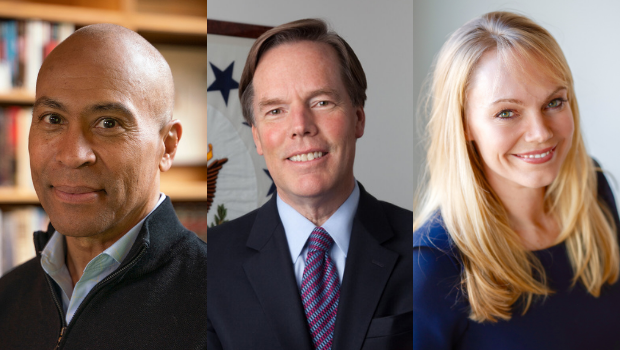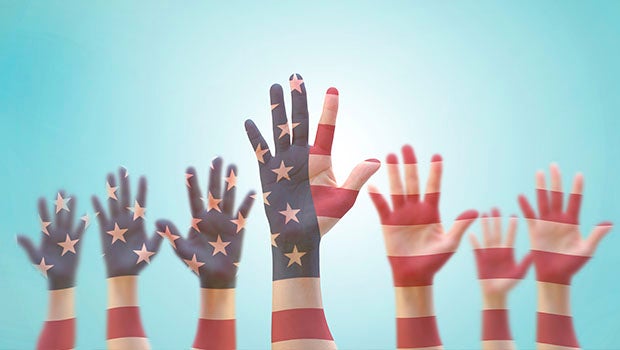
Photo Credit | iStock Photo
*This article originally appeared on The Huffington Post.
Many Americans celebrate Martin Luther King, Jr.’s birthday by volunteering to help their neighbors and nation. That’s a fitting tribute to a man who said life’s most persistent question is what we do for others. The national holiday enables an annual renewal of what Ronald Reagan called “this American spirit of voluntary service… that flows like a deep and mighty river through the history of our nation.” But when only 25 percent of Americans regularly volunteer and national service programs turn away more young people than they accept, we wonder whether America is really doing enough to honor the legacy of Dr. Martin Luther King Jr.
Since 9/11, millions of Americans have spent MLK Day serving through groups like Earth Conservation Corps, City Year, Martha’s Table, and Habitat for Humanity. Such experiences work to renew the civic spirit — our own and the country’s — at a time of historically low levels of social trust and lingering tensions that divide us by race, ethnicity, income, and immigrant status. More service experiences by more people across more backgrounds, beliefs, and borders would promote healing and common purpose.
This King Day, we can’t help thinking of Sargent Shriver’s February 1961 report to President John F. Kennedy recommending the immediate establishment of the Peace Corps. That slice of history offers a modern template for how the country could finally achieve large-scale national and international service — a dream at least 10 US presidents have shared. Shriver’s five-point plan remains a roadmap for our times to engage at least one million Americans in national service — a goal Shriver and Kennedy had and never realized for the Peace Corps.
Shriver’s first recommendation to Kennedy was to “supplement and extend the early pioneering efforts so that the variety and experimental quality of those projects [would] not be lost.” He did not want a large federal program that would swallow up private innovation, but rather, robust federal grants to existing nonprofits using Americans overseas.
Four Presidents across both parties — George H.W. Bush, Bill Clinton, George W. Bush, and Barack Obama — followed that advice by seeding, creating, and expanding a national service movement here at home. Since 1994, nearly one million Americans have served in AmeriCorps, which provides grants to 3,000 nonprofits mobilizing 75,000 Corps members every year. In 2009, a bipartisan majority in Congress passed the Serve America Act to triple those grants so that 250,000 Americans a year could tutor children in low-performing schools, serve meals to the vulnerable, clean up rivers and parks, and respond to natural disasters. If one-third of the eligible nonprofits in the United States had just one national service position each, these and other opportunities could double to 1.5 million. Congress should fully fund the Serve America Act, which the private sector would match.
Shriver next proposed that colleges and universities help implement the Peace Corps, noting that the Teachers College at Columbia University had agreed to recruit English teachers in East Africa. Universities, Shriver said, offered several advantages — an ability to recruit talented volunteers from their student population, train them over four years or after graduation, provide faculty supervision, and develop areas of study that linked service to learning. He called the Peace Corps “a great venture in the education of Americans,” with “impact on educational curriculum and student seriousness.”
If just half of the 4,000 colleges and universities in the United States had such efforts underway — as Tufts University, The College of William and Mary, the University of Pennsylvania, Tulane University, Drake University, Miami-Dade Community College and others already do — and offered national service opportunities to just 25 students per school, 50,000 young people could serve every year at home and abroad. The Lumina Foundation has challenged colleges with prizes to spark widespread innovation with regard to national service programs at colleges and universities.
Shriver recommended to Kennedy that US government agencies play leading roles in mobilizing volunteers to help meet their missions, such as helping to eliminate malaria. It would take nearly 50 years, but Shriver’s vision is finally being realized. The president’s Malaria Initiative has partnered with the Peace Corps and Malaria No More to mobilize 3,000 volunteers in dozens of African countries to help prevent and treat malaria.
On the home front, the US Departments of the Interior and Agriculture have proposed a modern version of President Franklin Delano Roosevelt’s Civilian Conservation Corps, with up to 100,000 service opportunities for Americans to restore and protect their national parks and other natural resources. Senators John McCain and Michael Bennet propose to make the new Conservation Service Corps permanent.
Because the infrastructure to fulfill his brother-in-law’s vision did not exist in 1961 among nonprofits, colleges, and agencies, Kennedy went with Shriver’s last option — creating a federal program that directly administered the Peace Corps. Shriver knew such an approach would constrain the size of the Peace Corps, which numbers just over 6,900 volunteers today.
In the last page of the report, Shriver outlined concrete next steps and concluded, “If you decide to go ahead on these, the Peace Corps can be in business Monday morning.” Kennedy moved swiftly, but confided to Shriver in the Oval Office that “the Peace Corps will be truly serious when 100,000 Americans are serving every year and a million over a decade.”
More than half a century later, America has the means and the will for national service on a large scale. Multiple surveys show overwhelming support for making national and international service a common experience for more Americans, and the infrastructure Shriver longed for in 1961 now exists. General (Ret.) Stan McChrystal is leading an effort to dramatically expand national and international service that follows Shriver’s roadmap so that the hundreds of thousands of young people who apply to serve every year are not turned away.
So, as we serve on Martin Luther King Jr. Day this year, let’s also build support for this concrete renewal of America’s commitment to one of its best ideas — to provide young and old alike the opportunity to show what they can do for their country.
John Bridgeland and Bruce Reed, co-chairs of the Aspen Institute Franklin Project, directed the White House Domestic Policy Council under President George W. Bush and William J. Clinton, respectively.

